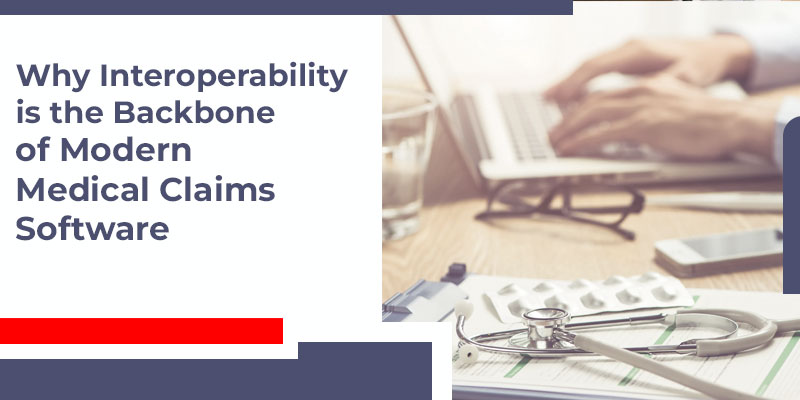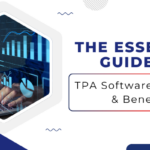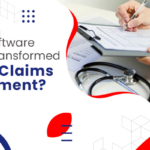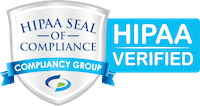Claims Software Systems: The Future of Smart Claims Handling
April 23, 2025
In today’s continuously changing healthcare sector, interoperability remains an important element within the confines of medical claims software. The requirement is more necessary as hospitals look to improve their operations, timely diagnosis, and patient care.
This article will discuss the necessity of interoperability in the emergence of medical claims software and its impact on efficiency, data accuracy, compliance, and overall healthcare results.
Understanding Interoperability in Medical Claims Software
Interoperability is a term that describes how various information systems, hardware, and software can use data together from the end user’s view.
Interoperable medical claims software allows healthcare providers, payers, other stakeholders, and other interested parties to exchange information safely across various platforms and devices.
Efficient claims processing, reduced administration workload, and improved patient care depend highly on understanding each other better through smooth interaction.
The Evolution of Medical Claims Software
The transition of medical claims software from manual paper systems to digital solutions has been a significant development.
This change, driven by the increasing demand for efficiency and accuracy in medical billing, has revolutionized the way healthcare professionals and medical billing specialists operate.
Some significant events marking key milestones in its development include:
- Digitization of Medical Records: Transitioning from paper to electronic health records (EHRs) set the stage for improved claims processing systems.
- Automation: Using an automated system for processing claims helped eliminate errors caused by manual inputs and hasten the time to adjudicate claims.
- Integration with EHR Systems: Nowadays, more advanced medical claims software is combined with EHR systems, automatically extracting relevant patient data.
- Adoption of Standardized Codes: Including ICD-10 and CPT codes in the submission process has eliminated the responsibility associated with claims.
- Emergence of Cloud-Based Solutions: Cloud technology has made it possible to scale claim processing solutions, making them less expensive and more reachable.
The Role of Interoperability in Modern Medical Claims Software
As medical claims software continues to evolve, interoperability plays a pivotal role in addressing the complexities of modern healthcare systems. Here are several ways in which interoperability enhances medical claims software:
Changes in claims software development, most notably in the medical sector, have made interoperability imperative in contemporary health systems.
The following are how interoperability can be used to promote the efficient use of medical claims software.
1. Simplifying Efficiency and Reducing Costs
Real-time data sharing between healthcare providers and payers speeds up the claims submission process. This, in turn, streamlines adjudication, reducing the need for manual data entry and errors. Claims approval becomes faster while administrative costs are reduced.
For example, when the treatment details of a patient are automatically moved from the EHR to the claims system, this prevents one from entering data twice and lowers the chances of having conflicts.
2. Enhancing Data Accuracy and Consistency
Precise data is needed to process medical claims. Interoperability allows data to be shared among systems without requiring manual intervention. Consequently, this reduces the chances of mistakes.
This includes transferring information such as patient demographics, diagnosis codes, and treatment details from EHR into claims systems. This enables the processing of claims using current information.
3. Enabling Compliance with Regulatory Requirements
Strict data security laws exist concerning healthcare such as HIPAA, which applies in the USA.
The designed interoperable systems ensure secure exchange pathways meet audit trail requirements, thereby enforcing compliance.
They are more likely to be used in healthcare organizations when obeying standardized coding systems and data exchange formats used in electronic data interchange (EDI) that are compliant with regulatory requirements.
4. Enhancing Patient Care
Interoperability in medical claims software makes enhanced patient care possible. This allows for more comprehensive and coordinated health information management, resulting in improved patient outcomes.
Healthcare providers benefit from integrated EHRs and other clinical systems linking claims systems. It is because they get all their patients’ histories, allowing them to make informed decisions concerning them and offering continuity of care.
For instance, gaining insight into the treatments and outcomes of a patient would be useful in making treatment plans more effective and avoiding redundant or potentially harmful interventions.
5. Enabling Value-Based Care Models
The move towards value-based care requires robust data sharing among all healthcare sector elements, indicating a patient-focused outcome instead of service volume.
Interoperable medical claims software aids in achieving this transition by enabling the collection and review of information from different sites. Such capability enables health providers, or those paying for their services, to evaluate treatment outcomes, identify what works best, and operationalize payments based on outcomes.
Linking claims data with clinical outcomes enables stakeholders to realize the value of healthcare services.
Challenges to Achieving Interoperability
Despite its clear benefits, achieving interoperability in medical claims software is fraught with challenges:
Despite its clear benefits, achieving interoperability in the software for medical claims is also not a walk in the park. Here are some challenges that you have to face to achieve interoperability:
1. Diverse Technology Ecosystems
Healthcare organizations often employ several systems from several vendors that use different data formats and protocols. To attain interoperability among these diverse systems, effective communication must be effected. This may be a technically complex task and one that requires substantial resources.
2. Data Standardization
A major obstacle to scaling data across various systems is that systems must be standardized. ICD-10 and CPT coding offer a structure; however, disparities in data entry approaches and meanings give rise to disparities within data. It is very important to come up with universally acceptable standards and ensure that these are adhered to throughout the board.
3. Privacy and Security Concerns
It is important to ensure patient data is secured and kept private during transfer. For this reason, interoperable systems must adhere to strict laws and implement strong strategies for protecting sensitive information against any breach or unauthorized access.
4. Cost and Resource Constraints
Investing in interoperable solutions, notably technology, training, and maintenance implementation among diverse models, demands considerable resources. This results in extremely high costs that could be more feasible for smaller healthcare providers and payers.
5. Collaborated Efforts
Achieving interoperability requires collaboration among technologists, healthcare players, payment organizations, etc. Although it is not easy to persuade folks to make a team effort, without this, the system would break down.
Strategies for Enhancing Interoperability
We can use several strategies in medical claims software to resolve these issues and achieve better interoperability:
1. Adopting Standardized Protocols and APIs
Utilizing interchangeable talk rules and software engineering programming interfaces (APIs) makes a smooth transition of system data possible. More users are now accepting standards such as Fast Healthcare Interoperability Resources (HL7 FHIR) to further interoperable resolutions.
2. Implementing Data Governance Frameworks
Building strong data governance frameworks ensures data exchange consistency, accuracy, and security. To achieve that, one needs to define data standards, implement quality control measures, and ensure compliance with regulatory requirements.
3. Investing in Integration Platforms
Healthcare institutions can acquire integration platforms that close the gap between different systems. These systems are able to deliver middleware solutions for translating and forwarding information from one system to another, thus enabling them to work together seamlessly.
4. Fostering Stakeholder Collaboration
To ensure that different people can work effectively together, they must be motivated. This can be done by creating certain common goals instead of only pursuing what is best for oneself.
5. Leveraging Emerging Technologies
Some clusters of technologies, including AI, blockchain, and ML, can lead to increased compatibility. For example, one method through which blockchain can achieve secure information transfer is by providing an environment that is free from tampering with data while at the same time helping to avoid any form of hacking attacks. On the other hand, both AL and ML may help normalize/merge data from different sources into a single format.
The Future of Interoperability in Medical Claims Software
Medical claims software’s future is closely connected to the ongoing progress of interoperability. As it evolves, technology is likely to define the future in several ways:
1. Increased Adoption of Cloud-Based Solutions
Cloud technology will continue promoting portability by giving scalable, elastic, and affordable data-sharing systems. Solutions based on cloud computing can allow the sharing of real-time information by enhancing more efficient claim processing, resulting in improved patient care.
2. AI and Machine Learning
With more applications increasingly relying on AI and ML, interoperability becomes critical. Once data handling is automated, observing trends becomes elementary, and anticipation of eventualities sets in. Another application is smoothing claims and shaping appropriate decisions.
3. Expansion of Blockchain Technology
Blockchain technology ensures secure and transparent data exchange. Addressing key challenges linked to decentralized interoperability can improve data integrity and privacy.
4. Patient-Centric Interoperability
With the growing popularity of patient-centered care, interoperability efforts will be more patient-focused. This will enhance such a patient’s access and control of his/her health information by enabling individuals to share their data across different healthcare providers and payers as well as integrating claims data into their personal health records.
5. Regulatory Support and Incentives
Government and regulatory bodies will continue to perform an important task and promote interoperability through policies, incentives, and standards. In the United States, acts such as the 21st Century Cures Act aim to increase data access and sharing within the health sector significantly.
Conclusion
The progress of medical claims software and seamless data exchange and interoperability ensure efficiency, accuracy, ease of doing things the right way, and good patient care. As the healthcare industry evolves, so does medical claims software, given that its functionality is improving daily.
Despite challenges in this sector, the continued development and enhancement of technology, alongside the joint efforts of all interested parties, will propel this industry into more connectedness and efficiency.
How Health Claims Management Software Transforming The Industry?
February 7, 2025How Claims Software Can Transform Your Claims Process?
January 29, 2025The Need For Healthcare Claims Management Software
January 13, 2025Reasons You Should Invest in Claims Management Software
January 7, 2025The Essential Guide To TPA Software Features & Benefits
December 24, 2024Claims Management Software: Key To Streamlining Your Business
December 18, 2024How TPA Software Solutions Transformed Medical Claims Management?
November 20, 2024









